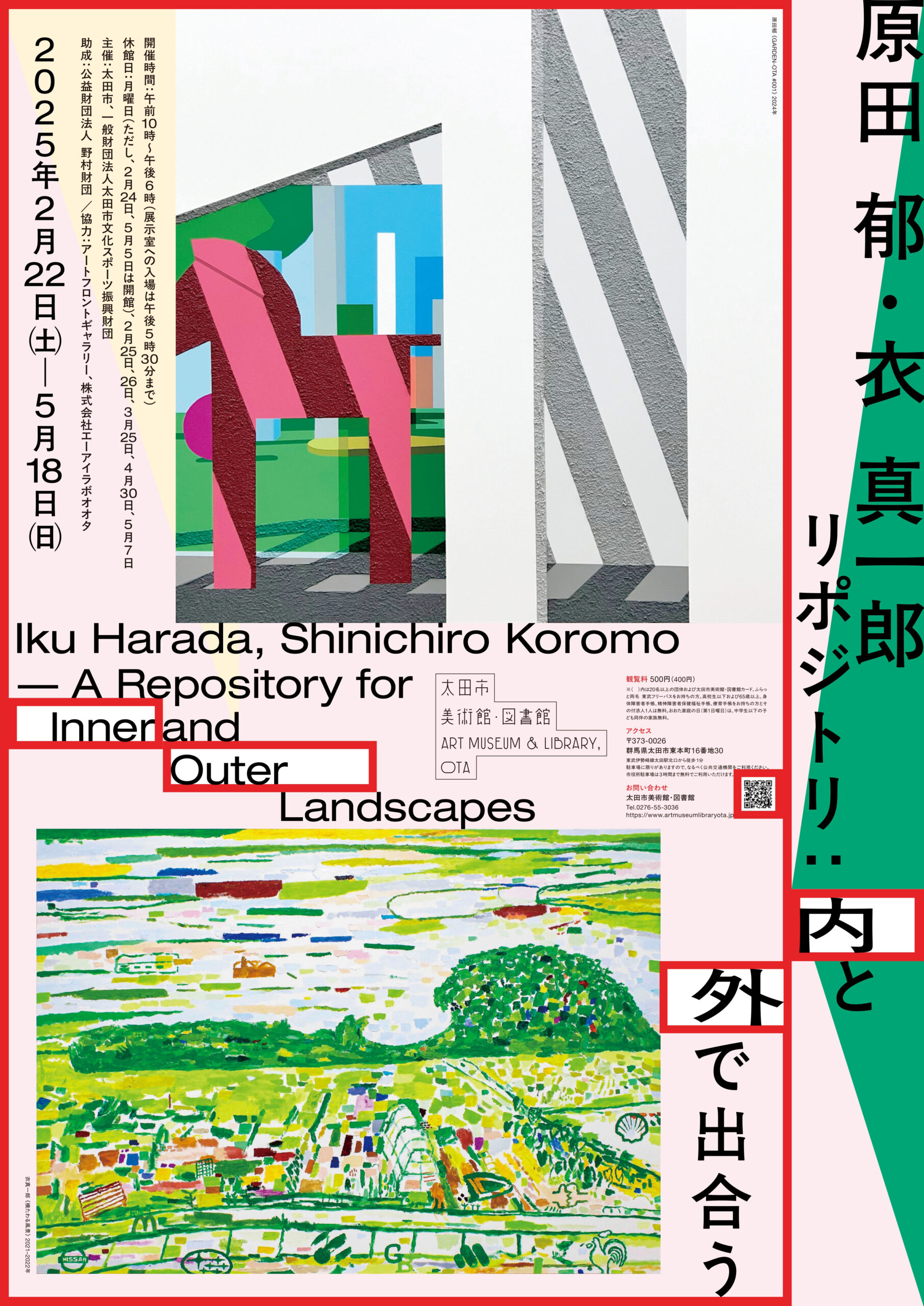Iku Harada, Shinichiro Koromo – A Repository for Inner and Outer Landscapes
February 22 (Sat), 2025 – May 18 (Sun), 2025

Encounter two types of sceneries, generated and stored in “inner” and “outer” environments.
Installed at various points in and around the museum are paintings, objects and installations
by Iku HARADA and Shinichiro KOROMO.
INFORMATION
Event Name: Iku Harada, Shinichiro Koromo – A Repository for Inner and Outer Landscapes
Venue: Art Museum and Library, Ota
Period: Saturday, February 22, 2025 – Sunday, May 18, 2025
Open: 10:00 am – 6:00 pm (Entrance to the exhibition room closes at 5:30 pm)
Closed: Mondays, February 25, February 26, March 25, April 30, May 7
Admission Fee:500 (*400 yen)
*For group of 20 people or over, ART MUSEUM & LIBRARY, OTA card holders, or Furatto Ryomo Tobu Free Pass holders.
Free for high school students or younger, the age 65 or over, disability certificate holders and their one attendant.
Free for families with children age of 15 or under on “Ota family day” (March 2, April 6 and May 4 )
Organizers: Ota City, Ota city Culture & Sports Promotion Foundation
Sponsored by: NOMURA FOUNDATION
Collaborated by: ART FRONT GALLERY
Outline
In this exhibition, Iku Harada (1982-) and Shinichiro Koromo (1987-) present paintings that respectively depict “inner” and “outer” sceneries.
Contemporary artist Iku Harada has continuously expanded the “inner space” that she created with 3D computer graphics as a virtual world of her own to walk around in, and then translate parts of it into paintings. Shinichiro Koromo is a painter who walks around areas with landmarks such as kofun (burial mounds), mountains or rice fields, mainly in and around his hometown, to scan, internalize and paint those sceneries while taking their surroundings into account as well.
The human being has been described as an “animal, fantasist and computer combined.”[1] Every single one of us is accumulating images of landscapes at our respective places, in our memory and in our heart. We all have memories of outdoor locations and certain sceneries that temporarily appear while continuously changing with the times and seasons. But many people must have experienced also inner, possibly digital spaces that have engraved unique, temporary images of themselves on their minds, depending on things like the viewer’s environment at the time, physical condition or mood. Such accumulations of inner and outer landscapes are certainly expanding and enhancing the “world” as it appears to us.
Usually meaning a storehouse or other kind of storage space, the term “repository” also refers to a tomb, and more recently, to the storage of digital data. It expresses at once also the nature of this facility that accommodates an art museum and a library, and contains hints at the ever-expanding realm of the virtual world on the one hand, and that of overgrown ancient kofun on the other, which the two artists featured here take as their main fields of activity. Based on their encounters with landscapes in their own respective repositories, the artists express in their works the “inner, virtual world as a mirror of the mind,” and the “outer, physical world that changes by the second.”
We hope that your visit to this exhibition, and your experience of the inner and outer landscapes that these artists have created by their respective unique methods, will help expand your own “world” in one way or another.
[1] In Yi-Fu Tuan, Space and Place: The Perspective of Experience, University of Minnesota Press, 1977
